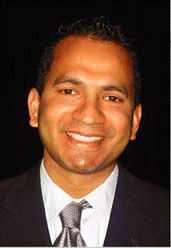MARCO ISLAND, FL-Doctors suggest that an new artificial skin product-already approved for the treatment of patients with major burns and other injuries-could have application for repair of large head and neck surgical wounds.
Explore This Issue
April 2007A description of the product, which is approved by the Food and Drug Administration, was presented by Kapil Saigal, MD, a resident in otolaryngology-head and neck surgery at Thomas Jefferson University in Philadelphia, at the first combined meeting of the four geographical sections of the Triological Society.
Dr. Saigal said the product-Integra Dermal Regeneration Template for Skin Replacement (Integra Lifesciences, Plainsboro, NJ)-as well as other biomaterials, such as cadaver allograft skin, xenographic skin, and bioengineered skin substitutes, may be able to span the gap between skin grafting and free tissue grafting.
Skin grafts are fragile, especially when placed on areas where there is little underlying soft tissue for support, said Dr. Saigal. Skin grafts often cannot tolerate radiation; they tend to contract; they contain abnormal pigmentation; and patients are prone to donor site complications.
These grafts are more functional than cosmetic, he noted.
 The dermal template allows for ingrowth of fibroblasts, macrophages, and epithelial cells into the wound bed. In addition, a top layer of the template prevents moisture loss just like the native epidermis.
The dermal template allows for ingrowth of fibroblasts, macrophages, and epithelial cells into the wound bed. In addition, a top layer of the template prevents moisture loss just like the native epidermis.
-Kapil Saigal, MD
Advantages of New Biomaterials
The new-generation biomaterials-used either as a short-term or permanent replacement until normal skin regeneration occurs-appear to overcome most of the drawbacks and complications that occur with skin grafts.
The Integra product is not well known to us in head and neck surgery, said John Rhee, MD, Associate Professor of Otolaryngology at the Medical College of Wisconsin in Milwaukee. That is one reason we wanted to hear this report and why we included it on the program.
Dr. Rhee noted that the report generated questions from the audience who were interested in the device and how it could be used in practice.
It certainly looks like a promising use for patients with large wounds, Dr. Rhee said. However, like all new products brought to the market, we will need further studies, including comparative studies against standard practices so we can judge how well it performs as far as outcomes and complications are concerned.
In making the case for use of the artificial skin, Dr. Saigal said that it appears Integra has numerous advantages over standard skin graft treatments:
Leave a Reply